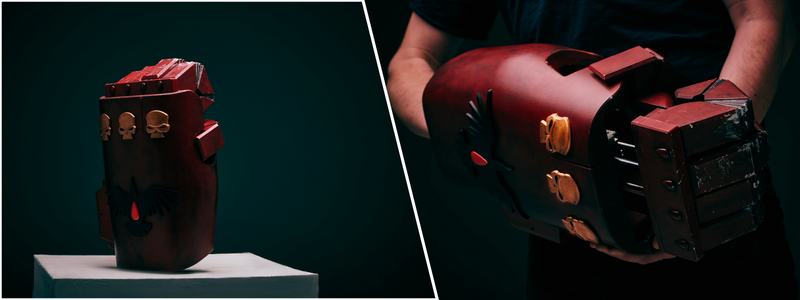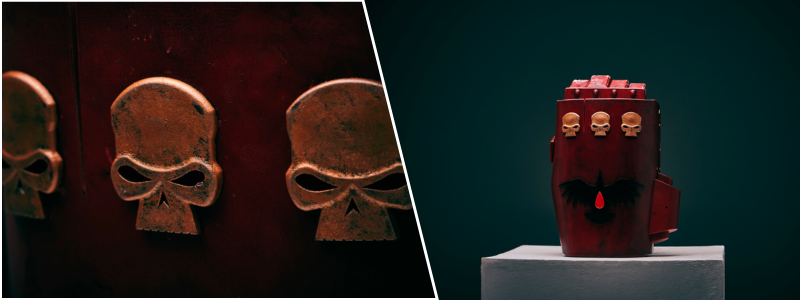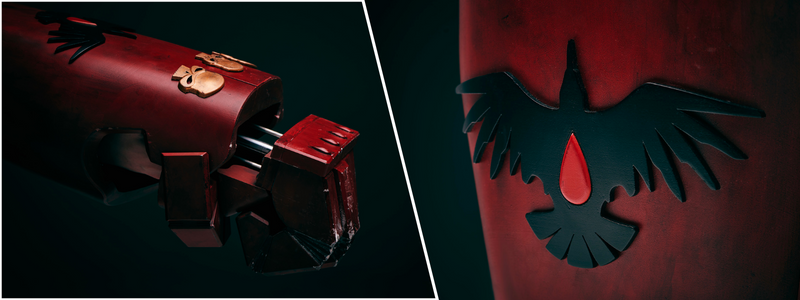From an engineering viewpoint, a prototype is a preliminary version of the intended final product. A prototype doesn’t need all the features and functionalities of an end product, but it should correspond well to the desired design, shape, size, and aesthetics. The idea behind a prototype is to let designers and engineers evaluate the product’s working principle, usability, and specifications. The prototype is constantly refined and improved throughout product development until it transforms into a “final” prototype before the design enters the mass-production phase.
Continuous development in manufacturing technology has arrived at a point where prototyping is no longer expensive and time-consuming. Rapid prototyping with 3D printing or CNC machining can fabricate complex objects using plastic and metal materials directly from CAD models. Most importantly, nearly all rapid prototyping services and freelancers specialize in low-volume custom fabrication works.
 Table of contents
Table of contents
Rapid prototyping methods
Some people use the terms “rapid prototyping” and “3D printing” interchangeably, although they are not the same things. 3D printing is simply one method to achieve rapid prototyping by additive manufacturing, which includes popular options such as:
- Fused Deposition Modeling (FDM): one of the most affordable 3D printing processes to build parts from plastic materials. However, an industrial-grade FDM can also print objects from carbon fiber and metal powder (infused with plastic filament).
- Stereolithography (SLA): SLA is a better rapid prototyping method than FDM for objects that require a smooth finish and fine details. The process does not use plastic filament but liquid resin as the base material to produce transparent/translucent parts.
- Selective Laser Sintering (SLS): powdered polymers are melted (shaped) layer by layer using a laser. The method is best when building a functional prototype that can withstand rough handling.
- Material Jetting: droplets of photopolymers are deposited through a nozzle on a build plate. Exposure to light will cure the droplets quickly, allowing the machine to build an object layer by layer. The method allows for the fabrication of an object using multiple different materials.
- Binder Jetting: a liquid agent binds a specific region of a layer of powder material to build a shape. The process continues from one layer to another until the material transforms into the desired physical object. The used powder material can be plastic, metal, wood, or ceramic.
- Sheet Lamination: while technically a 3D printing method, sheet lamination differs from the abovementioned methods. It works by stacking sheets of material and cutting them to create the final shape. Usable materials include paper, metal, and plastic. The material can be fused in various methods, such as heat and sound. Sheet lamination is a blend of additive and subtractive manufacturing.
- CNC Machining: an example of a subtractive manufacturing method, CNC machining builds an object or parts of an object by cutting, milling, drilling, and manipulating a single block of material. The technique is ideal for creating metal parts but can handle plastic just fine. CNC machining is the best rapid prototyping option when high accuracy and tight tolerances are crucial.

There are many best methods to cover your rapid prototyping needs. It all depends on which phase of product development you currently stand. Early in the design process, a simple non-functional model should be good enough as a proof of concept. You can even make it from the cheapest material available to reduce cost. As the development progresses and another prototype is needed, you may want to produce a functional or beta prototype that closely resembles the intended final product in terms of material, finishes, and structural strength. You can also build the proof-of-concept with 3D printing services and the final prototype with CNC machining.
RELATED: 3D printing services, cost and rates for companies and firms
The design part
Regardless of the rapid prototyping method utilized during fabrication, the design part always follows the same progression path. The first step is to prepare the digital drawing. Using CAD software, the prototype designer creates a three-dimensional illustration of the part to be prototyped. You can also purchase a ready-made 3D model from online marketplaces. The file is saved in a format readable by the prototyping equipment. Most 3D printers can fabricate the part (based on the file) with only minor adjustments. In contrast, a CNC operator has to translate the file into a programming command the machine can execute.
Some prototypes might need assembly, especially when they comprise multiple parts that must be created one at a time. Then, there is the finishing part, which usually involves washing, polishing, or applying colors.
Why rapid prototyping?
A primary advantage of rapid prototyping is that it allows businesses and everyday inventors to have proof-of-concept as early as possible during product development. Unlike conventional manufacturing methods (such as injection molding), rapid prototyping is a budget-friendly option for low-volume production. Ordering a small batch of custom-made parts has become economically viable. Most freelancers in the 3D printing or CNC machining industry do not have a strict minimum order quantity. You can place an order for one item.
Customizability is another strong point of rapid prototyping. Advanced 3D printing technology can handle even the most complex geometries and intricate structures that are otherwise cost-prohibitive to create with other manufacturing methods. Tooling is no longer an issue because a 3D printer is essentially a mini factory capable of creating just about any object in any shape imaginable.

The same thing applies to CNC machining, although it is more flexible than 3D printing in terms of customization. If your prototype is supposed to have complex internal structures, CNC can only do so much to drill and mill the material. The only workaround is to machine the parts separately. For instance, a gun is a more complex object. Still, a single CNC machinist should be able to create a functional prototype of a revolver or rifle by producing the parts individually.
Rapid prototyping rates
There isn’t a universal price range for rapid prototyping services. Every prototype is different, and the clients, whether established companies or early investors, will likely have specific requirements and details. In most cases, the most significant factors to affect prices are as follows:
- Prototyping process: each method has its advantages and potential drawbacks. For example, an FDM is more affordable than an SLS, and the final product quality reflects the price.
- Prototype parameter: the size, shape, and complexity will also affect the price. Some materials are more expensive than others, and at the same time, certain materials require different processing techniques or finishing.
- Location: the rapid prototyping facility location also matters, assuming you order online. Not only does location determine shipping fees, but also labor costs.
Still, developing a ballpark figure to gauge the average price you should expect when hiring rapid prototyping services from freelancers in the U.S. and Canada is not impossible. Types of material and level of details must be taken into account. With that in mind, you can categorize the services into three major groups, including functional parts (made of ABS or PLA), figurines (transparent or high-grade resin), and metal objects (stainless steel, brass, or sterling silver).
Let us say you want to have a straightforward, functional caster prototyped from either ABS or PLA. The diameter should be big enough for a typical beer mug but not overly large that it looks out of place on a coffee table. One PLA caster should cost around $2.50, whereas the ABS variant is about twice as much. An SLS nylon caster falls in between at $3.50 plus shipping.
As for the figurine or miniature, you might want a smooth finish and good details. A figurine the size of a small USB stick (about 5cm) is priced at no less than $20 for transparent resin or closer to $25 for high-quality resin. The cheapest option is a standard resin figurine, which should cost about $5 per piece.
Metal objects cost a lot more. They require more complex processing and more expensive materials in the first place. For instance, a jewelry metal bracelet with a diameter of 6cm costs nearly $400 for the sterling silver model and around $200 for the brass option.

When your rapid prototyping project calls for a subtractive (as opposed to additive) manufacturing method, CNC machining is one of the most viable options. Most CNC shops operate on a price/hour basis, so your best bet is to provide as detailed CAD drawings as possible to reduce setup time. You can also give the material to the shop to avoid the small percentage price markup. In the United States, the average rate goes from $60/hour for simple objects in large quantities to $150/hour for complex objects.
Rapid prototyping, with both additive and subtractive manufacturing methods, primarily aims to reduce the time spent on the early product development process. Rapid prototyping cannot produce anything beyond proof-of-concept unless the product is all-mechanical, such as a bicycle bell, an automatic watch, or an eyeglass frame. If the product has electric circuitry of any sort, the PCB must be assembled or prototyped using different methods.
Cad Crowd’s rapid prototyping freelancers can help
Contact Cad Crowd for a qualified and trusted 3D designer or rapid prototyping engineer to complete your project; you won’t regret it. The benefits are staggering.
We could list the numerous companies that choose to use this technology or the variety of new methods cropping up practically daily to meet the world’s increasing demand for rapid prototyping. Still, we’ll leave you with an examination of the beautiful benefits the technology can offer you. Look at everything it can do, and don’t hesitate to jump on board with the wave of the future.
Contact us today for a free quote to get started immediately.
